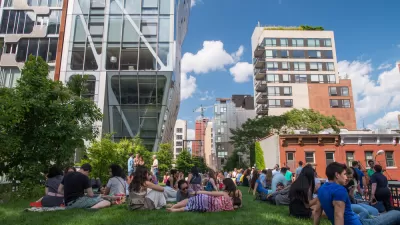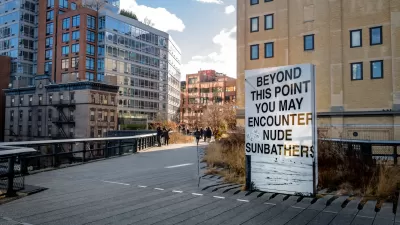The High Line is proving to be a powerful catalyst for development but the same can be true for nearly all parks (less perhaps the starchitect-designed projects near the High Line), explains former Empire State Development Corp VP Carol Berens.

While parks were once seen as a fiscal drain on city budgets, they are now credited with boosting property values and fostering the creation of chic neighborhoods.
An example that proves the point is NYC’s High Line, according to architect, author, realtor, and former redevelopment official Carol Berens. It’s repurposing as a park captured the public’s attention when it first opened in 2009 and sparked the development of high-end residential and commercial projects during High Line’s first phase, specifically new apartment buildings.This growth is no surprise, according to Berens.
“From Central Park’s earliest days to today, private real estate concerns are never far away when parks are created. Ideas for parks unfold when land is contaminated and the surrounding neighborhood stagnant and struggling. A park’s construction and completion greatly influence the life of the city and affect the value of adjacent property—whether from the growth of new neighborhoods, the refurbishment of the old or the promise of unobstructed views in perpetuity. This increased land value from park development leads to fears, not unfounded, of neighborhood gentrification.”
Berens goes on to discuss the various developments around High Line and how condos and apartments around the park don’t come cheap for residents. The article includes many photos of the new developments.
FULL STORY: The New Eldorado?

Alabama: Trump Terminates Settlements for Black Communities Harmed By Raw Sewage
Trump deemed the landmark civil rights agreement “illegal DEI and environmental justice policy.”

Study: Maui’s Plan to Convert Vacation Rentals to Long-Term Housing Could Cause Nearly $1 Billion Economic Loss
The plan would reduce visitor accommodation by 25% resulting in 1,900 jobs lost.

Planetizen Federal Action Tracker
A weekly monitor of how Trump’s orders and actions are impacting planners and planning in America.

Waymo Gets Permission to Map SF’s Market Street
If allowed to operate on the traffic-restricted street, Waymo’s autonomous taxis would have a leg up over ride-hailing competitors — and counter the city’s efforts to grow bike and pedestrian on the thoroughfare.

Parklet Symposium Highlights the Success of Shared Spaces
Parklets got a boost during the Covid-19 pandemic, when the concept was translated to outdoor dining programs that offered restaurants a lifeline during the shutdown.

Federal Homelessness Agency Places Entire Staff on Leave
The U.S. Interagency Council on Homelessness is the only federal agency dedicated to preventing and ending homelessness.
Urban Design for Planners 1: Software Tools
This six-course series explores essential urban design concepts using open source software and equips planners with the tools they need to participate fully in the urban design process.
Planning for Universal Design
Learn the tools for implementing Universal Design in planning regulations.
Caltrans
Smith Gee Studio
Institute for Housing and Urban Development Studies (IHS)
City of Grandview
Harvard GSD Executive Education
Toledo-Lucas County Plan Commissions
Salt Lake City
NYU Wagner Graduate School of Public Service




























